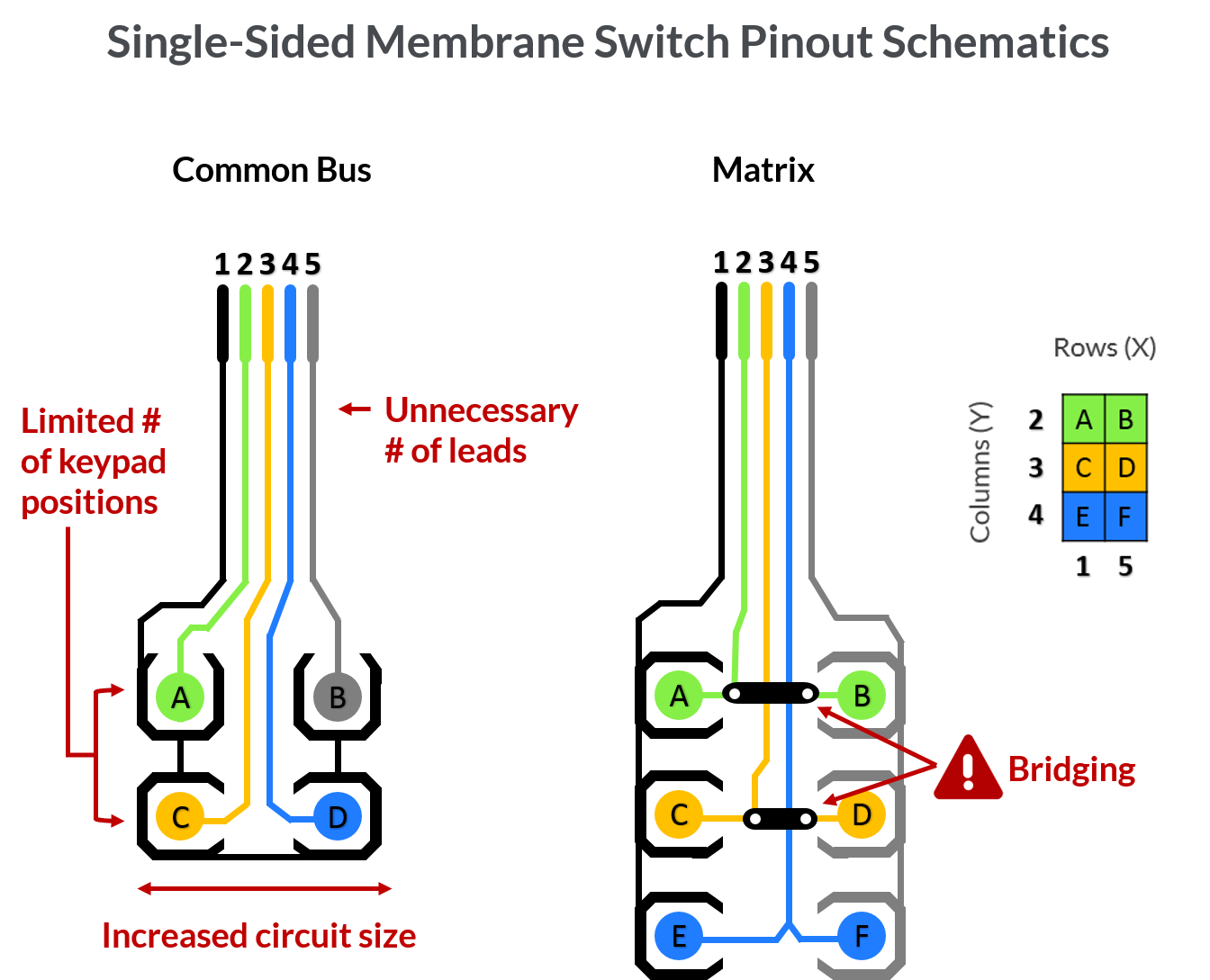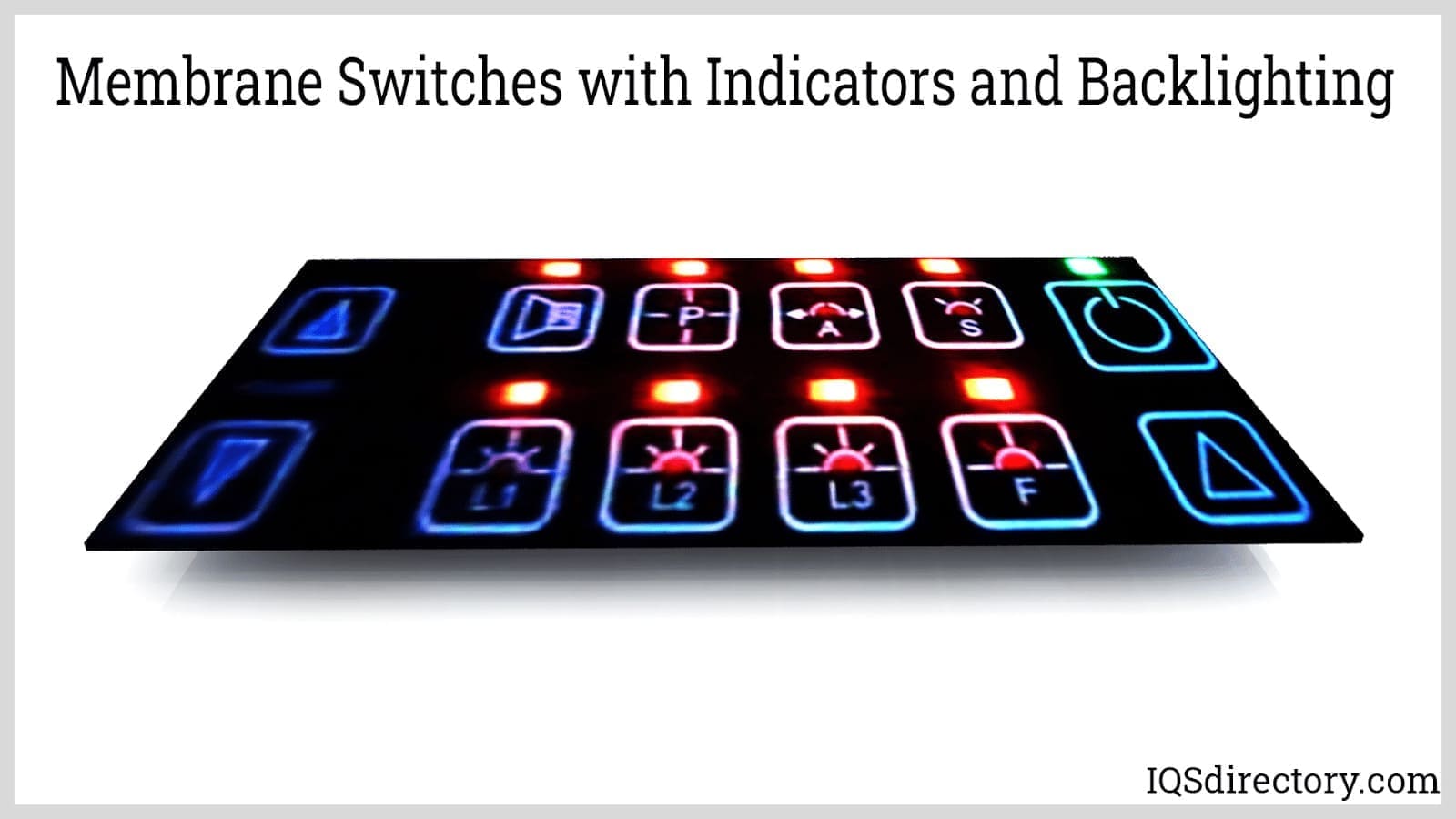How to select the right membrane switch for any industry
The Manufacturing Process Behind Membrane Switch Over: What You Need to Know
The production process behind membrane switches combines careful layout, material option, and quality assurance. It begins with comprehending the complexities of membrane layer switch layout and proceeds through various phases, including material choices and printing techniques. Each stage plays a necessary role in guaranteeing capability and toughness. However, the complexities of layer building and construction and the rigorous testing requirements might reveal understandings that are not promptly evident. What exists past these fundamental aspects?
Understanding Membrane Change Style
Membrane layer buttons may show up easy at very first glimpse, their design includes intricate factors to consider that assure performance and sturdiness. The design process begins with a comprehensive understanding of customer demands, including the user interface's intended application and environmental aspects. Comfort designs is a crucial component, as the design must assist in convenience of use while ensuring that responsive feedback satisfies customer expectations.Moreover, the layering of components, such as graphic overlays, sticky layers, and conductive traces, must be exactly crafted. membrane switch. This split configuration not only influences the switch's responsiveness however also impacts its longevity. Attention is provided to the securing methods utilized to protect against dampness and dirt, which can endanger efficiency. Furthermore, design factors to consider expand to appearances, where color design and visual clarity boost individual experience. Ultimately, the layout of membrane switches equilibriums performance, user experience, and durability, making certain that they satisfy the demands of numerous applications efficiently
Materials Made Use Of in Membrane Layer Switch Production
When selecting products for membrane button manufacturing, it is vital to contemplate both efficiency and toughness. The primary products include polyester and polycarbonate movies, which offer versatility and stamina. These movies are often covered with glue to assure proper bonding to substrates. Conductive inks, typically composed of silver or carbon, are vital for producing electric connections within the switch, permitting for dependable operation.Additionally, a safety layer, such as a hard layer, is often put on enhance scratch resistance and longevity. The choice of backing product, such as acrylic or foam, can substantially affect the switch's tactile feel and general customer experience. Numerous environmental elements, including temperature and moisture, ought to direct product selection to assure peak efficiency in certain applications. Inevitably, the appropriate combination of products contributes to the membrane layer switch's capability and life expectancy, making informed selections necessary for makers.
The Printing Process: Creating Video and Text
The printing process in membrane layer button manufacturing plays a considerable function in producing high-quality graphics and message. Different graphic style strategies are employed to ensure visual allure and performance, while mindful ink option methods are essential for resilience and performance. Comprehending these components is basic for achieving best outcomes in membrane layer button design.
Graphic Design Techniques
Graphic style strategies play a crucial function in the printing procedure of membrane switches, as they specify just how graphics and message will eventually appear on the last item. Efficient visuals layout involves the tactical use of designs, font styles, and colors to improve readability and visual charm. Developers commonly utilize vector graphics for scalability, making certain that images stay sharp at numerous sizes. Additionally, interest to comparison and positioning is vital, as it influences customer communication and aesthetic high quality. The unification of branding components, such as logo designs, must be managed with like keep brand integrity. Overall, thoughtful graphic layout techniques contribute considerably to the capability and beauty of membrane buttons, affecting user experience and product efficiency.
Ink Option Techniques
Picking the ideal ink is crucial for achieving the preferred aesthetic top quality and toughness in membrane button manufacturing. Various ink kinds are utilized, consisting of solvent-based, water-based, and UV-curable inks. Each kind supplies distinctive features, such as flexibility, resistance, and bond to ecological aspects. Solvent-based inks are usually favored for their resilience and vibrant shades, while water-based inks are a lot more environmentally friendly but might have constraints in bond. UV-curable inks supply fast treating and robust efficiency. Additionally, color matching methods guarantee that the chosen inks straighten with style specifications. Inevitably, the selection of ink need to take into consideration variables such as application approach, substratum compatibility, and end-use needs to accomplish exceptional lead to membrane button graphics and message.
Layer Building and Assembly

Material Selection Process
A cautious choice of products is essential in the manufacturing process of membrane switches, as it directly influences performance and toughness. The key products made use of consist of polyester, polycarbonate, and numerous conductive inks. Polyester is often favored for its excellent resistance to chemicals and abrasion, making it ideal for rough settings. Polycarbonate, on the various other hand, gives premium clarity and influence resistance, which is beneficial for applications requiring visibility and robustness. Conductive inks, typically made up of silver or carbon, are essential for developing trusted electric paths. Furthermore, the option of adhesive materials influences the total stability of the switch - membrane switch. Assessing factors such as environmental direct exposure, responsive comments, and aesthetic needs overviews makers in selecting the best products for their details applications
Layer Bond Techniques
Sticking layers in membrane layer switch construction is an essential procedure that guarantees functionality and long life. Different adhesion strategies visit here are utilized to secure ideal bonding in between layers, which usually include the usage of adhesives, heat, and stress. Pressure-sensitive adhesives (PSAs) are frequently utilized for their convenience of application and instant bonding capabilities. In addition, thermal bonding techniques can be used, where warm is made use of to trigger adhesive properties, safeguarding a strong bond. The option of adhesion technique largely relies on the materials entailed and the specific application needs of the membrane switch. Correct positioning and consistent application of adhesives are vital to protect against problems, safeguarding the switch runs effectively throughout its designated life-span.
Quality Assurance Procedures
Assuring quality read control throughout the layer building and construction and assembly of membrane switches is essential for preserving efficiency and integrity. This process usually entails several essential procedures, including detailed inspections at each stage of manufacturing. Suppliers utilize advanced screening methods, such as peel tests and attachment assessments, to verify the integrity of layer bonds. In addition, aesthetic inspections are performed to identify any type of flaws in printing or product incongruities. Ecological problems, such as temperature level and moisture, are carefully kept track of to guarantee optimal treating and bond. In addition, normal calibration of tools aids keep exact production requirements. By applying these quality assurance actions, suppliers can substantially lower the threat of item failure, guaranteeing that the last membrane layer switches over fulfill the needed specs and customer assumptions.
Examining and Top Quality Control Procedures

Advancements in Membrane Switch Modern Technology
As improvements in innovation continue to advance, membrane layer switches are taking advantage of ingenious developments that boost their capability and individual experience. One notable technology is the combination of capacitive touch technology, which permits for more intuitive and receptive interface. This change not only improves appearances however also lowers mechanical wear and tear, expanding the life-span of the switches.Additionally, improvements in graphic overlay products have brought about improved longevity and resistance to environmental variables such as wetness and UV light. These products now use boosted clearness and illumination, further raising the aesthetic appeal.Furthermore, the incorporation of wise modern technology is transforming membrane layer switches over into interactive control board, making it possible for connectivity with IoT gadgets. This connection fosters a seamless individual experience, leading the way for applications in different sectors, from healthcare to consumer electronics. Jointly, these innovations position membrane layer switches over as crucial elements in contemporary tool design.
Frequently Asked Concerns
Just how Lengthy Does the Membrane Layer Switch Manufacturing Refine Take?
The period of the membrane layer button manufacturing process can vary significantly. Variables such as complexity, products made investigate this site use of, and production volume influence timelines, with normal manufacturing varying from a few days to several weeks for conclusion.
What Are the Usual Applications for Membrane Layer Switches?
Membrane layer buttons are commonly utilized in various industries, including automotive controls, home appliances, medical devices, and consumer electronics (membrane switch). Their flexibility and sturdiness make them suitable for applications calling for straightforward user interfaces and trustworthy performance in diverse atmospheres
Can Membrane Changes Be Customized for Specific Needs?
What Is the Lifespan of a Normal Membrane Layer Switch?
The life expectancy of a regular membrane layer switch varies, yet generally, it ranges from 1 to 5 million cycles. Aspects such as use, setting, and worldly quality significantly affect longevity and overall efficiency with time.

Are Membrane Layer Switches Eco-friendly?
The environmental kindness of membrane layer switches over differs. Some products made use of might not be recyclable, while others can be environmentally friendly. The overall impact depends on manufacturing materials and practices, necessitating mindful factor to consider throughout choice and disposal. The manufacturing procedure behind membrane layer switches combines careful layout, product selection, and quality control. It starts with comprehending the complexities of membrane layer button design and proceeds with different phases, consisting of material choices and printing strategies. When choosing materials for membrane layer switch production, it is crucial to consider both performance and longevity. A cautious selection of products is vital in the manufacturing procedure of membrane buttons, as it directly affects performance and durability. The option of adhesion approach mostly depends on the products included and the details application demands of the membrane layer switch.